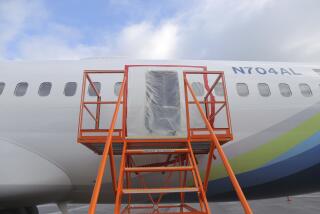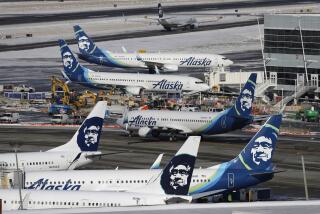Flight 800 Investigation: Anyone Talking to Anyone?
For a variety of reasons, it is discomforting to note that it took three weeks for investigators to determine that the explosive residue found in the ruins of TWA Flight 800 might have come from a routine security test for bomb-sniffing dogs.
The 747 jetliner exploded off Long Island, N.Y., shortly after takeoff on the night of July 17, killing all 230 people aboard. Within two days of the explosion, federal officials said that the huge fireball and the absence of signs that the jet had been having equipment trouble meant that some kind of explosive device was a possible cause of the disaster. Within three days, the now familiar core possibilities of a bomb, a missile or catastrophic mechanical failure had been announced.
And while one of the nation’s worst airline disasters has now faded from the daily headlines, any news regarding a possible cause is followed with great interest. That certainly was the case in August when the FBI and the National Transportation Safety Board said that traces of the explosive PETN had been found on the parts of the wreckage in at least two separate instances. National attention once again was riveted on the story. But it was not until last Friday that the Federal Aviation Administration told the FBI that this particular 747 had been used in an FAA security exercise with airport police in St. Louis in June. The exercise involved the placing of test packages, including PETN, on the aircraft as a training exercise for bomb-sniffing dogs. The residue found on Flight 800 wreckage might have come from that test.
The FBI and the NTSB say that the FAA’s belated disclosure has done nothing to slow the course of their investigation and that they would not have proceeded any differently had they known of this earlier. But many questions deserve consideration.
Why are routine recertification tests for bomb-sniffing dogs conducted on airliners that are in active service? Couldn’t they be done on retired aircraft? This test was one of several thousand conducted around the nation each year. There may be hundreds of American airliners flying today that are carrying traces of residue from explosives. If no one thought before about how that might complicate an investigation like this, it ought to be thought about now.
Moreover, it took the FAA and TWA three weeks to determine that the 747 had been used for such a test; it turns out that the records kept for such events are spotty and incomplete, and no central depository for such records exists. A change in that area ought to be on any new list of security recommendations.
The TWA disaster, and the continuing investigation into the bombing at Centennial Olympic Park during the Atlanta Games, caused many Americans to reassess the government’s ability to thwart terrorist incidents in the United States. It has spawned a high-level commission on airport and airline safety and has led, in part, to a Clinton administration request to Congress for $1.1 billion to tighten airline security and fight global terrorism.
Success or failure in securing that kind of money may very well rest on the degree of faith that Americans have in the notion that the FBI, the NTSB and the FAA know all the facts that need to be known and can impart those facts quickly to one another in such cases. Clearly, that didn’t happen in this one.
More to Read
Sign up for Essential California
The most important California stories and recommendations in your inbox every morning.
You may occasionally receive promotional content from the Los Angeles Times.










